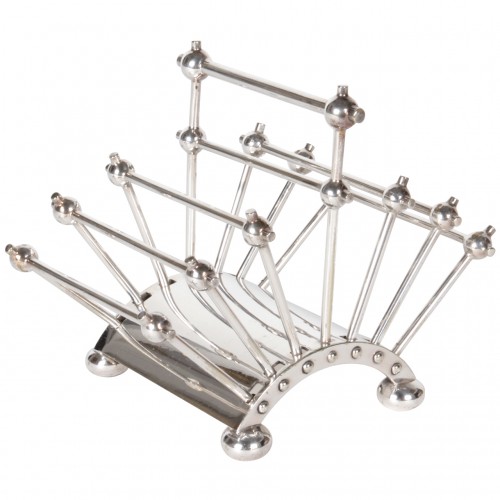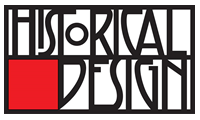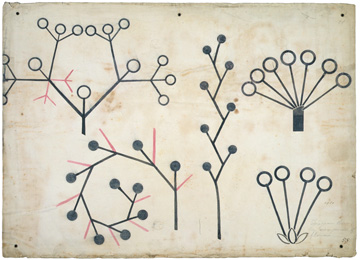Product Description
Christopher Dresser / Hukin & Heath Aesthetic Movement “Adjustable” Toast or Letter Rack 1881



CHRISTOPHER DRESSER (1834-1904) UK
HUKIN & HEATH Birmingham, England
Adjustable toast or letter rack 1881
Silver-plate (articulated model)
Marks: H&H, 2555, stylized fleur-de-lis touch mark
Illustrated: Truth, Beauty, Power: Dr. Christopher Dresser 1834-1904, exhibition catalogue Historical Design, Inc. (New York, 1998) p. 21.
H: 5″ x W: 6 1/2″ x D: 4″
There is another model of this toast /letter rack in the collection of the British Museum, London, as well as the Metropolitan Museum of Art, New York.
Christopher Dresser / Hukin & Heath Aesthetic Movement “Adjustable” Toast or Letter Rack 1881
You must be logged in to post a comment.
CHRISTOPHER DRESSER (1834-1904) UK
HEATH & MIDDLETON Birmingham, England
Petite claret jug 1887
Sterling silver mounts with hinged covers to both top and spout, glass, ebony handle
Marks: JTH & JHM in a four-lobed cartouche, London assay marks for 1887 (“M” in a shield), Vienna import mark (conjoined AV in a 6-sided cartouche)
Illustrated: Industrial Design Unikate Serienerzeugnisse, Die Neue Sammlung ein neuer Museumstyp des 20. Jahrhunderts, Hans Wichmann (Munich: Prestel-Verlag, 1985), p. 131; Christopher Dresser, ein Viktorianischer Designer, 1834-1904 (Cologne: Kunstgewerbemuseum der Stadt Köln, 1981), p. 73, ill. 86, cat. no. 23; Industrial Design, John Heskett (New York and Toronto: Oxford University Press, 1980), p. 24, illus. 9; Christopher Dresser 1834-1904, Michael Collins (London: Camden Arts Centre, 1979), p. 171, cat.no.12.
H: 6” x Dia: 4”
CHRISTOPHER DRESSER (1834-1904) UK
MINTON, Stoke-on-Trent, England
“Cloisonné” vase 1867
Glazed porcelain with polychrome enamel decoration and gilding
Marks: MINTON, date cipher for 1867
Illustration: Truth, Beauty, Power: Dr. Christopher Dresser 1834-1904, exhibition catalogue, Historical Design, Inc. (New York, 1998) p. 78.
H: 9 7/8”

Reviews
There are no reviews yet, would you like to submit yours?